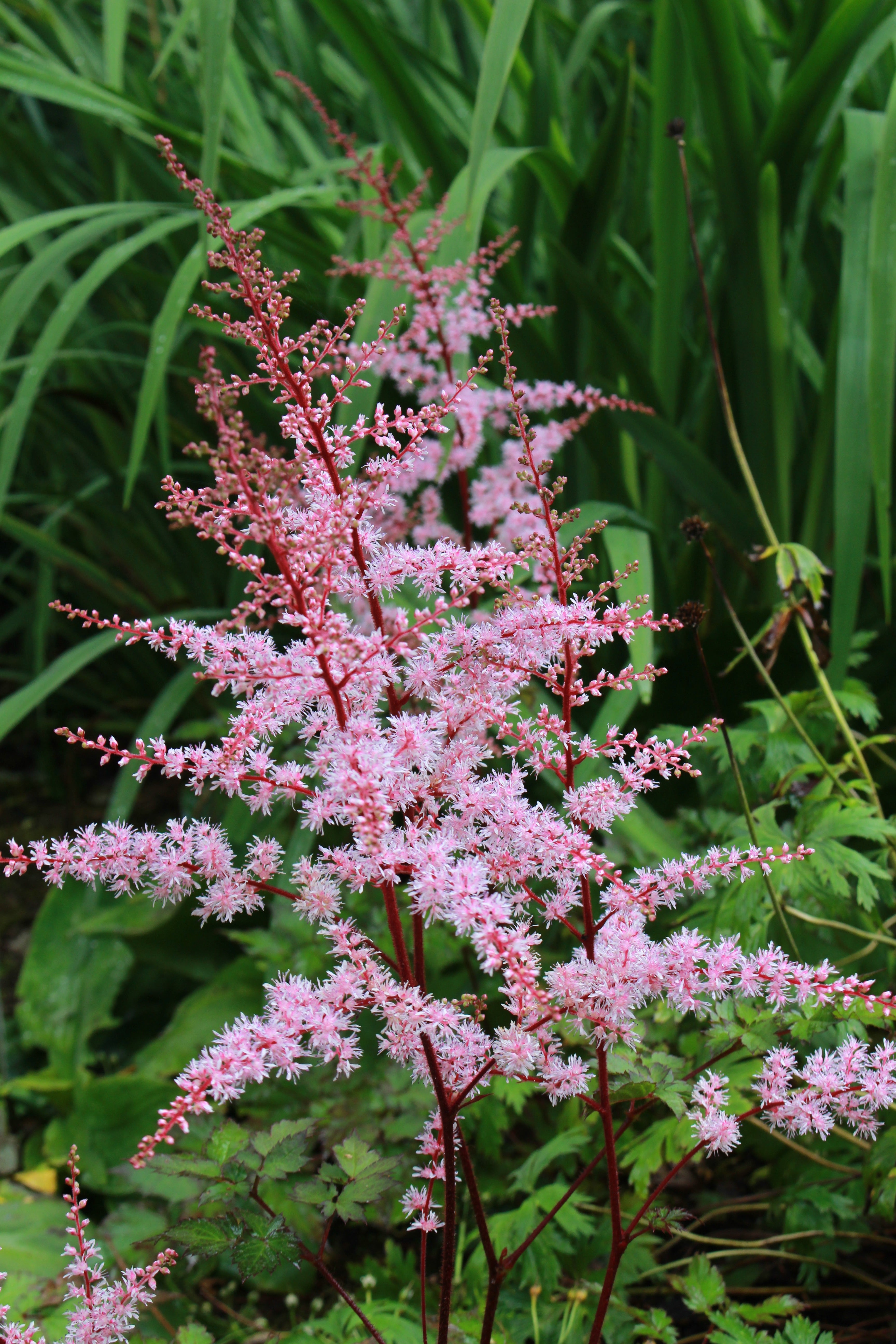Astilbe 'Delft Lace'
Approx. 0.5 litre pot
About this cultivar:
Astilbe 'Delft Lace' is a great astilbe with dark blue-green-purplish foliage. The flowers are pink plumes accented with dark pink buds on glowing red stems. A 2009 introduction from Henricus Maria Joseph Holtmaat in Holland - presumably somewhere near Delft! (is there a town called Lace in the Holland?). This plant has been great with us.
- Position: Full sun, partial shade, sometimes full shade
- Soil: Almost any soil - grows well in Ballyrobert! Loves wet soil
-
Flowers: July, August, September
- Other features: Cut Flowers or Dried Flowers
- Hardiness: H7 - Hardy in the severest European continental climates (< -20°C), Fully hardy - grows well in Ballyrobert!
- Habit: Bushy, Clump forming
- Foliage: Deciduous
- Height: 60 - 90 cm (2 - 3ft)
- Spread: 30 - 45 cm (1 - 1.5ft)
- Time to full growth: 2 to 5 years
- Plant type: Herbaceous Perennial
- Colour: Pink, green, purple
-
Goes well with: At Ballyrobert we experiment with plant combinations such as Carex, Periscaria, Monarda, Penstemon, Phlox, Rosa and even Eryngium (yes, Eryngium! We have found moisture tolerant cultivars and put it next to drought tolerant Astilbe cultivars)
About this genus:
Astilbe, also known as false goat's beard or false spirea, is a herbaceous perennial genus that contains eighteen species of perennials that are native to North America and Asia. Astilbe selections are reliable garden favorites, and they tend to love our temperate climate at Ballyrobert. They even tolerate our heavy clay soil. We have trialed many cultivars, and sell those which have done well for us. We have many great cultivars in the garden but don't sell them all (we used to but no-one seemed to love them as much as us!)
Because Astilbe prefers a moist site, even wet feet, it can often be grown beside (but not in!) a pond or stream. Although usually listed as a shade plant, Astilbe can grow well in part shade or even full-ish sun as long at there is enough moisture to stop it drying out. Astilbe chinensis types and other hybrids do not need as much moisture as other species. Astilbe chinensis are slowly spreading, rhizomatous plants which bloom later than the Arendsii hybrids and generally feature hairy (rather than glossy) leaves. The Arendsii hybrids are a large group of hybrids involving crosses between chinensis, thunbergii and asttillboides and as a result they can vary considerably in size, colour and shape. They are named after the prolific perennial breeder George Arends (1862-1952) between 1902 and 1952 he introduced over 74 cultivars of Astilbe!
In and around summer time Astilbe provides a vibrant display of colour in the garden with brightly coloured, feathery flower spikey-plumes above attractive, deeply-cut foliage. Astilbe is one of those genus whose flowers also keep their structure when they dry out - giving you another 'season' of interest albeit in darker-browner hues. As a result they make a great cut flower and they are often found in florists.
This genus looks dreamy in large groups where its colourful flowers paint a broad, impressionistic, swath and attract butterflies. At Ballyrobert we also with plant combinations such as Carex, Periscaria, Monarda, Penstemon, Phlox, Rosa and even Eryngium (yes, Eryngium! We have found moisture tolerant cultivars and put it next to drought tolerant Astilbe cultivars)




